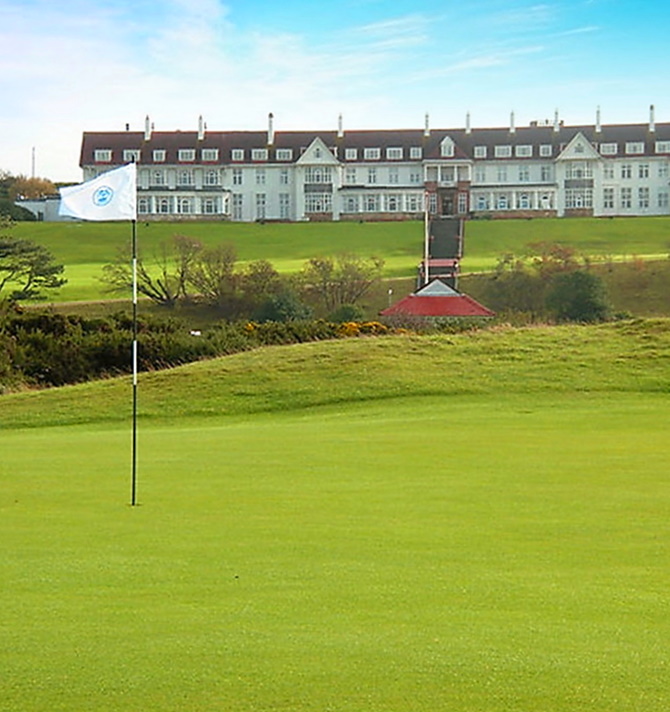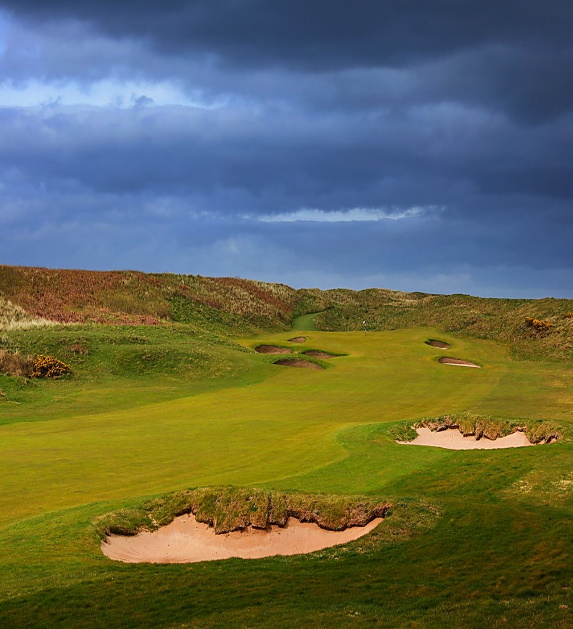
Played as a par five by visitors, but a par 4 in the Open, the fifth hole was the hardest on the course and averaged 4.454 when the championship was last played here in 2009. The new green has been pushed back 30yds into a natural amphitheatre of duned banking and at a higher elevation. It looks destined to become a favoured vantage point for spectators. Players should look to hit their tee shot down the right side of the fairway to leave the best possible view of the green. The next shot must be accurate as an array of devilishly hard bunkers is waiting for any errant shot.
Formerly a par 4 playing inland, the new par 3 begins a trio of coastal holes unrivalled in world golf. The tee shot now plays across a craggy cove where the Atlantic roars in at high-tide. The iconic Stevenson lighthouse overlooks the green. It’s pure drama.
The only regret we had about the new ninth was that perhaps the old wall of the lighthouse keepers garden might have been retained as a feature somehow? It’s not as if stonewalls are unheard of on Scottish links
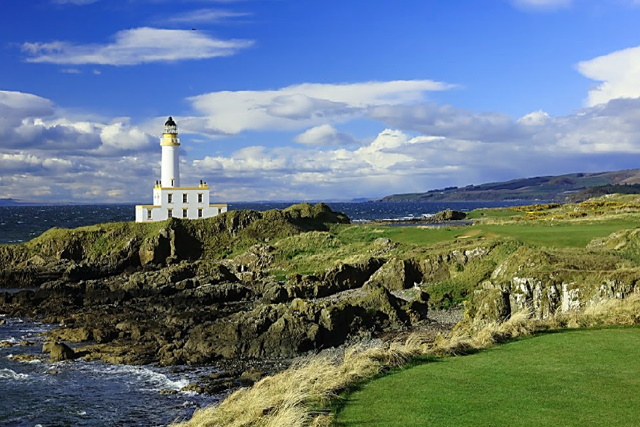

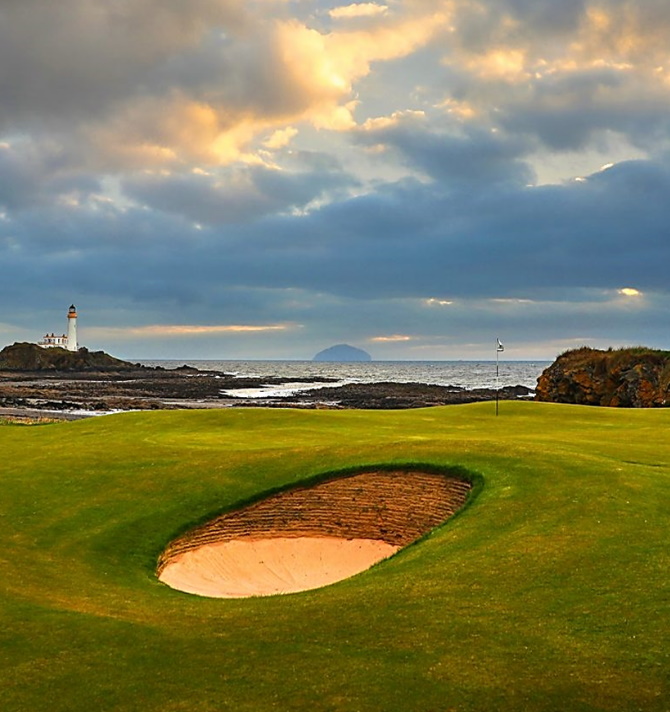
The declared intention was to build the best par 3 in the world (at the ninth). They might very well have a candidate for the best par 5 at ten.
The hole arcs its way around the bay and poses questions all the way. The perils of trying to bite too much off a dog-leg isn’t exactly unknown golfers. The penalty for doing so here is the Atlantic though. Pretty terminal your prospects! The safer shot however leaves you a long way back in the fairway. The famous old bunker has been restored to something closer to the very original layout and will gleefully accept anything under-hit in the approach. Going to the right would then require you to swing your third into a new green which has been pushed down onto the shoreline now meaning that once again you need to be incredibly accurate to avoid being carried away into the drink
This dramatic setting is a fitting end to the most incredible eight hole coastal stretch in golf, as there is a touch of genius about this par 3. The architects had spotted an unused outcrop on a small nub of land that sat beyond a secluded a series of rockpools. They quickly realised that this was a green that had previously been overlooked. It’s rare indeed to find a completely new option that had never previously been considered. The eleventh is a much more intimate par 3 than the ninth but looks destined to be every bit as popular once television introduces her
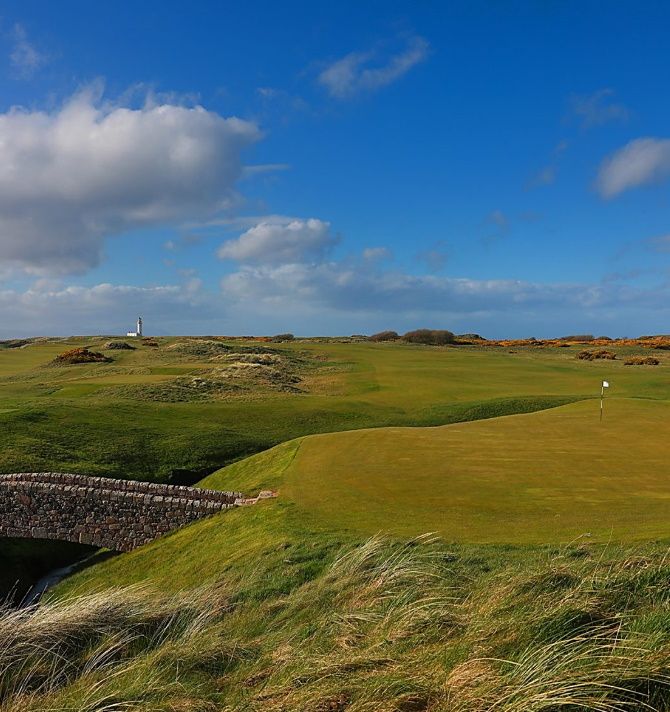
Ahead of the 2009 Open Championship the sixteenth hole was reprofiled in order to lend it more drama. The feature of the hole is Wilsons Burn, a stream that might better be described as a mini-ravine that snakes its way around the green complex. A good tee shot down the right half of the fairway will leave the optimum angle to approach the green but beware, a watery grave awaits those who are not successful. Perhaps one of the most endearing things about Wilson’s burn is that the steep run off slope if heavily grassed. It might actually give your ball a half chance of holding and allowing you to attempt a recovery shot
The old wooden bridge has been discarded and replaced with a stone construction
The old 18th was unique to the Open, the only closing hole played on a dog-leg (Portrush’s new 18th is now). In a move which wasn’t universally welcomed a new tee box was set on the ridge of sand dunes that run along the shoreline. The result is that the new eighteenth now plays as a straighter hole allowing the golfer to experience a processional coronation.
One of the most striking features of Turnberry is the majestic hotel that sits on top of the hill overlooking the estate. A closing hole that leads you triumphantly towards this makes a lot of sense. The eighteenth green however can never be forgiven for the capricious ‘hard bounce’ it gave Tom Watson in 2009.
